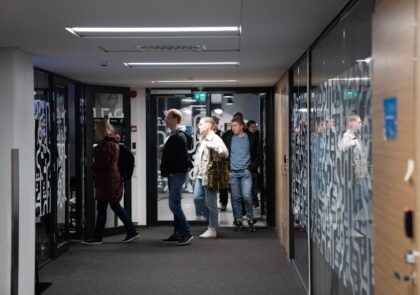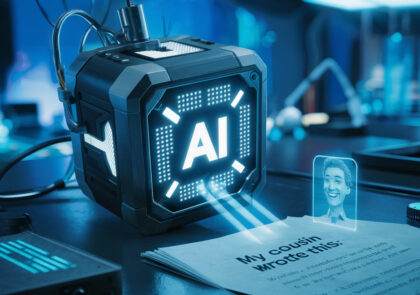
The Global Goals of sustainable development aim at securing equal opportunities for a peaceful and prosperous life for present as well as future generations (Purvis, Mayo & Robinson, 2019). Achieving these goals requires active involvement from individuals, organizations and countries around the world. This article discusses the relevance of the Global Goals in terms of research, development and innovation activities in the focus area of health at LAB University of Applied Sciences. The aim is to shed more light on the impacts the ongoing projects have on promoting social equality, environmental balance and economic growth.
Authors: Kati Peltonen & Tiia Peltonen
17 steps toward sustainable development
According to the Brundtland Commission Report (Brundtland, 1987), sustainable development can be defined as development that meets the needs of the present without compromising the ability of future generations to meet their own needs. The United Nations Agenda 2030 for Sustainable Development was established in 2015 (United Nations, 2015) and this global framework envisions a future with equal rights, inclusive societies, and viable and diverse ecosystems. The Agenda 2030 encompasses 17 global goals, which function as steppingstones toward a more sustainable future. These 17 Sustainable Development Goals are presented in below (figure 1).

Figure 1: Agenda 2030 Goals for Sustainable Development (Wikimedia 2021)
The three dimensions of sustainability
Sustainability can be viewed from multiple different perspectives, but the most acknowledged model suggests that there are three dimensions of sustainability
– economic, environmental, and social. This model is commonly represented by three intersecting circles with sustainable development at the center. Economic sustainability promotes long-term economic growth without negatively impacting the environment. In practice, this can mean the sustainable use of non-renewable resources and waste reduction. Environmental sustainability in turn focuses on protecting ecosystems, restoring biodiversity, and using natural resources in a sustainable way. Social sustainability concentrates on improving human welfare, reducing inequalities, and creating sustainable communities. While economic and environmental sustainability are on some accounts considered to be more important than social sustainability, the integration of these three dimensions is essential in achieving sustainable development.
Research, development, and innovation activities
At LAB University of Applied Sciences research, development and innovation activities are carried out in four strategic focus areas, namely health, design, innovations and sustainability. The focus area of Health promotes holistic wellbeing and humane everyday life. The Sustainability focus area works towards more sustainable future by developing circular economy and less material use. The Design focus area advocates design thinking where citizen engagement is at its core. Commercialization of Innovations Focus area in turn promotes solutions which have monetized value. Much like the dimensions of sustainability, these focus areas are also integrated and work in collaboration to develop new projects and innovations. This interlinkage is illustrated below (figure 2).

Figure 2. The four strategic focus areas of LAB University of Applied Sciences (LAB University of Applied Sciences 2021).
Routes to health and wellbeing
The main objective of the focus area of health is improving the overall health and wellbeing of individuals and communities in an effective way. Together with partners, this focus area develops human-driven digital and technological solutions in the context of wellbeing. In addition, this focus area has a significant role in promoting education, employment, and entrepreneurship with the aim of reducing social exclusion as inclusion breeds wellbeing.
A fundamental aspect of improving health and wellbeing is understanding that this goal can be achieved through many different routes. Most projects directly promote this goal, for example educating and hiring more qualified healthcare professionals and social workers has a direct link to improving health and social services along with having a positive effect on employment. However, sometimes the impacts of projects are more indirect. As an example, a project may focus on developing new digital tools and technological innovations to improve the product development of businesses and organizations. Although it is not a direct result of the project, this in turn can lead to increased productivity and profitability creating prerequisites for employment and thus enhancing health and wellbeing.
Making an impact
The question that often comes up regarding research, development and innovation activities is the adequate assessment and visibility of the impacts of these projects. What makes evaluating effectivity so challenging, is that it cannot be considered from just one aspect and as mentioned before, the impacts of projects are not always direct. To help make these impacts more visible and comprehensible, a new type of impact work was recently initiated in the focus area of health. This impact work focuses on connecting the objectives of the projects to the goals of sustainable development and making these linkages visible.
As a result of this assessment, it is evident that the majority of the projects in the health focus area promote primarily the goals 3, 4, 8 and 10 of Agenda 2030 which aim at enhancing health and wellbeing, ensuring inclusive education and equality as well as eradicating poverty, unemployment and social exclusion in an environmentally sustainable manner. However, as multidisciplinary competence and collaboration between different sectors becomes increasingly common, the projects start to meet the goals of sustainable development more comprehensively.
The project portfolio needed this kind of assessment as in many cases it may be difficult to “see the forest from the trees.” In other words, when implementing the project activities and aiming to reach the objectives of the projects on a more practical level the broader impact goals may not always be the first thing in mind. However, when operating with public funding, it is important to also explicitly assess and describe the wider impact of the projects.
Another reason behind making the societal, environmental, and economical contribution more visible is pinpointing and identifying needs for future development. At LAB University of Applied Sciences, the wheels are constantly in motion to challenge existing ways of thinking and to develop new innovative and sustainable solutions for humane everyday life.
References
Brundtland, G. 1987. Report of the World Commission on Environment and Development: Our Common Future. United Nations General Assembly Document A/42/427. [Cited 14 June 2021]. Available at: https://sustainabledevelopment.un.org/content/documents/5987our-common-future.pdf
Purvis, B., Mao, Y. & Robinson, D. 2019. Three pillars of sustainability: in search of conceptual origins. Sustainability Science. Vol. 14, 681–695. [Cited 14 June 2021]. Available at: https://doi.org/10.1007/s11625-018-0627-5
United Nations. 2015. The United Nations Agenda 2030 Goals for Sustainable Development. [Cited 14 June 2021]. Available at: https://sdgs.un.org/goals
Images
Wikimedia 2021. Agenda 2030 Goals for Sustainable Development. [Cited 14 June 2021]. Available at: https://upload.wikimedia.org/wikipedia/commons/d/df/Sustainable_Development_Goals.png (CC BY-ND)
LAB University of Applied Sciences 2021. LAB Strategy 2030. [Cited 15 June 2021]. Available at: https://www.lab.fi/en/info/about-us/strategy
Authors
Kati Peltonen works as a RDI Director in the Health focus area at LAB University of Applied Sciences.
Tiia Peltonen has studied ecology and environmental biology and works as a project worker at LAB University of Applied Sciences.
Illustration: https://pxhere.com/en/photo/1099173 (CC0)
Published 9.8.2021
Reference to this article
Peltonen, K. & Peltonen, T. 2021. Sustainable development and impact through innovative Health project. LAB Pro. [Cited and date of citation]. Available at: https://www.labopen.fi/en/lab-pro/sustainable-development-and-impact-through-innovative-health-projects/






